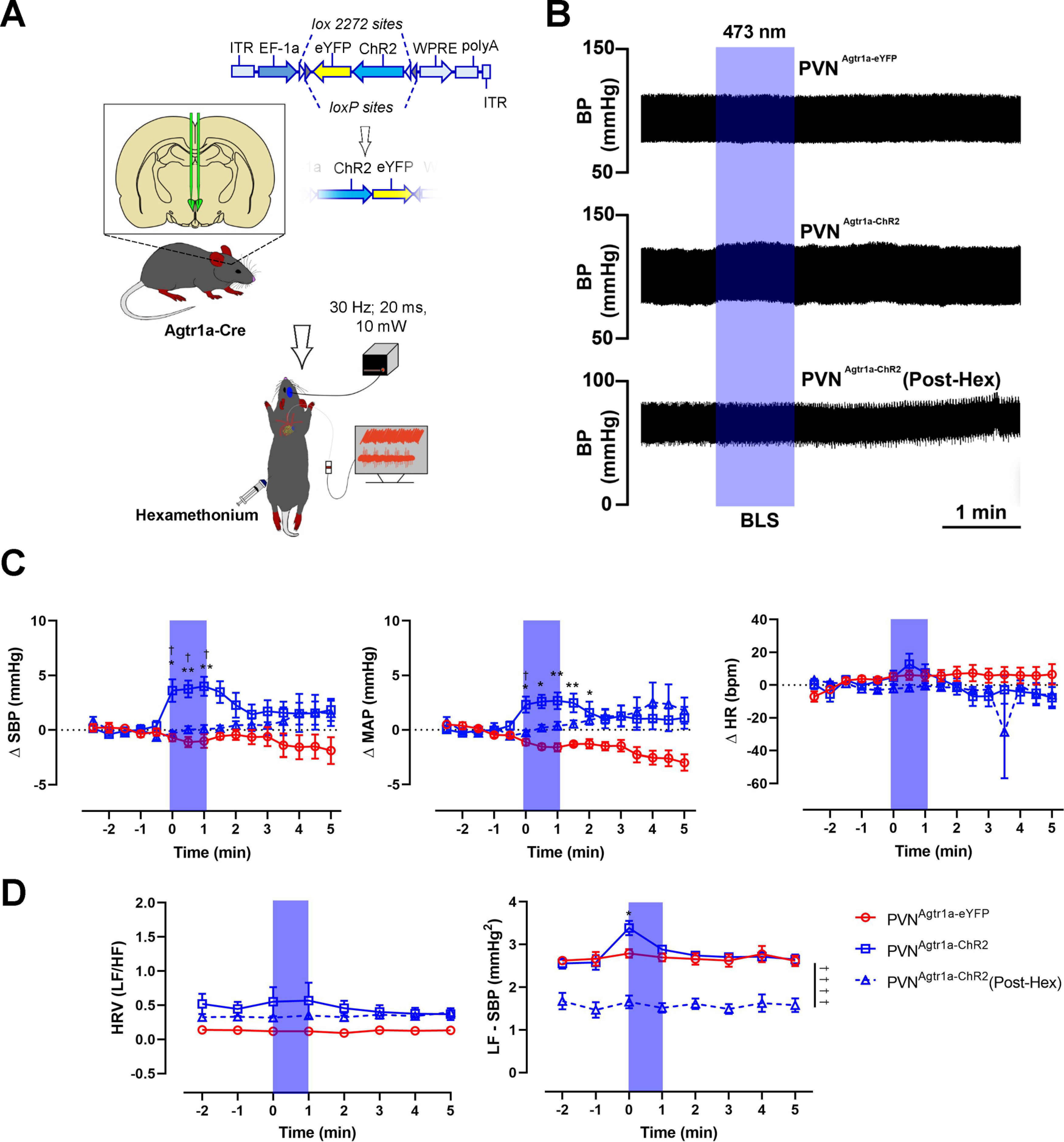Figure 2.

Optogenetic stimulation of PVNAgtr1a elicits sympathetically mediated increases in blood pressure. A, Schematic depicting the mouse line and experimental protocol. In this experiment, Agtr1a-Cre mice received a Cre-inducible AAV-ChR2-eYFP into the PVN. Following recovery, PVNAgtr1a were optogenetically stimulated (10 mW; 20 ms pulse width; 30 Hz; 1 min) while cardiovascular parameters were recorded via a Millar catheter inserted into the left carotid artery. B, Representative pulsatile arterial blood pressure traces following blue laser stimulation (BLS) in PVNAgtr1a-eYFP mice, PVNAgtr1a-ChR2 mice, or PVNAgtr1a-ChR2 mice following the systemic administration of hexamethonium (30 mg/kg, i.p.). C, Group means demonstrating the change in SBP (left), mean arterial pressure (MAP; middle), and heart rate (HR; right). D, Group means demonstrating the change in heart rate variability (left; HRV – ratio of the LF domain over the HF domain) and the LF domain of SBP variability (right; LF – SBP). Error bars indicate SEM. p < 0.05; p < 0.05; two-way ANOVA followed by Tukey's post for PVNAgtr1a-eYFP versus PVNAgtr1a-ChR2. †p < 0.05; two-way ANOVA followed by Tukey's post for PVNAgtr1a-ChR2 versus PVNAgtr1a-ChR2 (Post-Hex), n = 6: PVNAgtr1a-eYFP, n = 11: PVNAgtr1a-ChR2, n = 10: PVNAgtr1a-ChR2 (Post-Hex).
